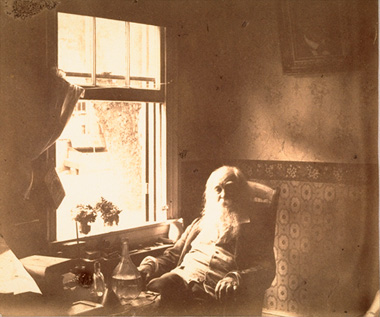While doing a little Whitman “googling” earlier today, I came across a 2005 article from the New York Times by Charles McGrath. Aptly titled “O Camden! My Camden!”, McGrath reflects on the state of Camden (as well as the other Whitman locales). Before embarking on a bit of a chronology of Whitman’s different “homes” and locations, McGrath provides his prediction of what a modern revision of “Song of Myself” could possibly include. He suggests:
You black-topp’d highways! You white-strip’d lanes for passing, cruising and breaking down!
You teeming toll plazas! You capacious token baskets! You springy barriers that leap up for E-ZPass!
You welcoming rest stops! You lead-free pumps! You food courts featuring Roy Rogers, Carvel and Mickey D’s! You Sunglass Huts!
I salute you all! And I embrace my fellow travelers, each and every one, as I ride side by side with you in your Denali, and you with me in my Silverado pickup!
While these revisions don’t exactly strike me as particularly Whitman-esque, McGrath uses them to motivate a discussion of how some of today’s historical Whitman sites are acknowledged by tourists and visitors. According to his research, the Whitman homestead in Huntington, NY remains a very popular site for visitors. In addition to a visitor center, the house itself embodies the historical “feel” of authentic nineteenth-century life, complete with chamber pots and a lack of electrical outlets. McGrath calls the Huntington site a “regular fixture on the school field-trip circuit.”
McGrath contrasts the popularity of the original Whitman home with that of his final abode here in Camden. Although 328 Mickle Street attracted the likes of Oscar Wilde and Bram Stoker when Whitman resided there, today it boasts a rather lackluster visitor rate. The Walt Whitman House has far fewer visitors than the home in Huntington, but, as McGrath points out, its “feel” is a great deal more literary. Personally, I’m struck by the authenticity of seeing piles of paper on Whitman’s bedroom floor and the window by which he sat for that famous portrait by Thomas Eakins. Despite its not quite being a “regular fixture” for field-trips (as McGrath classifies the Huntington house), it seems to embody much more of the Whitman spirit we’ve come to know and appreciate in Whitman’s work.
There are likely many factors contributing to the difference in popularity between Huntington and Camden. After attending the Walt Whitman House Dedication Ceremony last week, I’m hoping that the new label of “literary landmark” might help attract this kind of recognition. It seems that even though Whitman’s legacy is so well-known and reputable today, the little row house in Camden remains a bit of a “hidden jewel” so-to-speak.
Tags: camden, walt whitman house, ww20

No comments
Comments feed for this article
Trackback link: http://lisar.lookingforwhitman.org/2009/11/16/o-camden-my-camden/trackback/